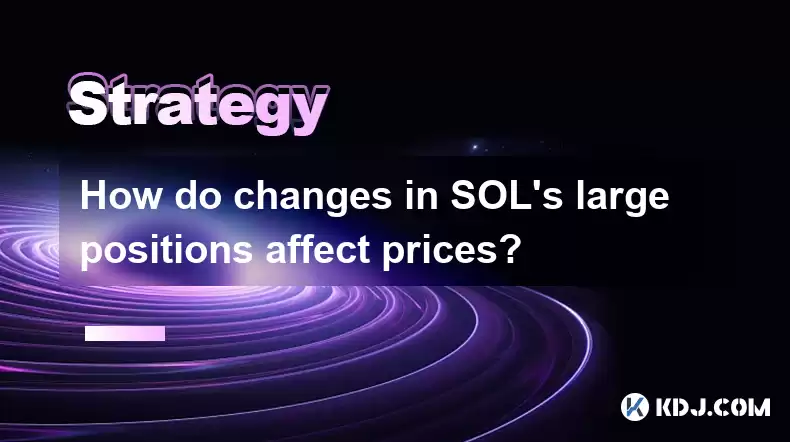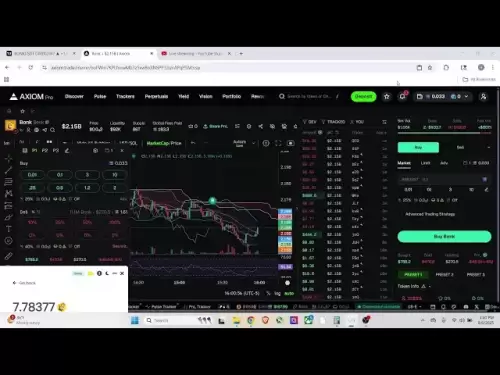-
 Bitcoin
Bitcoin $115100
1.27% -
 Ethereum
Ethereum $3675
2.71% -
 XRP
XRP $2.995
1.45% -
 Tether USDt
Tether USDt $1.000
0.02% -
 BNB
BNB $769.8
2.64% -
 Solana
Solana $168.0
3.25% -
 USDC
USDC $0.9999
-0.01% -
 TRON
TRON $0.3371
1.48% -
 Dogecoin
Dogecoin $0.2051
3.36% -
 Cardano
Cardano $0.7394
2.30% -
 Hyperliquid
Hyperliquid $38.15
0.42% -
 Stellar
Stellar $0.3966
-0.36% -
 Sui
Sui $3.486
2.93% -
 Chainlink
Chainlink $16.72
2.52% -
 Bitcoin Cash
Bitcoin Cash $568.0
4.36% -
 Hedera
Hedera $0.2440
2.59% -
 Ethena USDe
Ethena USDe $1.001
0.04% -
 Avalanche
Avalanche $22.16
2.06% -
 Litecoin
Litecoin $119.1
-0.73% -
 UNUS SED LEO
UNUS SED LEO $8.991
0.04% -
 Toncoin
Toncoin $3.232
-0.39% -
 Shiba Inu
Shiba Inu $0.00001233
2.82% -
 Uniswap
Uniswap $9.717
2.53% -
 Polkadot
Polkadot $3.664
1.85% -
 Dai
Dai $1.000
0.01% -
 Monero
Monero $281.2
-3.89% -
 Bitget Token
Bitget Token $4.350
1.55% -
 Cronos
Cronos $0.1428
5.07% -
 Pepe
Pepe $0.00001050
3.68% -
 Aave
Aave $262.3
3.54%
How do changes in SOL's large positions affect prices?
Large positions in SOL, held by whales, can significantly impact prices; buying increases demand and price, while selling boosts supply and may decrease price.
Apr 19, 2025 at 09:08 pm

Changes in SOL's large positions, often referred to as "whale movements," can significantly impact the price of Solana (SOL). These large positions are typically held by institutional investors, high-net-worth individuals, or large trading firms. When these entities buy or sell substantial amounts of SOL, it can lead to noticeable shifts in the market dynamics. Understanding how these movements affect prices is crucial for traders and investors looking to navigate the volatile cryptocurrency market.
What are Large Positions in SOL?
Large positions in SOL refer to significant holdings of Solana tokens by a single entity or a group of entities. These positions can range from millions to billions of dollars worth of SOL. The term "whale" is commonly used in the crypto community to describe these large holders. Their actions, whether buying or selling, can influence the market due to the sheer volume of tokens they control.
How Do Large Buys Affect SOL Prices?
When a whale decides to accumulate a large amount of SOL, it can lead to an increase in the token's price. This happens because the demand for SOL increases as the whale buys up a significant portion of the available supply. Here's how it typically unfolds:
- Increased Demand: The whale's buying activity increases the demand for SOL, which can lead to a price surge.
- Market Sentiment: Other traders and investors may interpret the whale's buying as a bullish signal, further driving up the price.
- Liquidity Impact: Large buys can temporarily reduce the available liquidity in the market, making it harder for other traders to buy SOL at the current price, thus pushing the price higher.
How Do Large Sells Affect SOL Prices?
Conversely, when a whale decides to offload a large amount of SOL, it can lead to a decrease in the token's price. The mechanics behind this are as follows:
- Increased Supply: The whale's selling activity increases the supply of SOL in the market, which can lead to a price drop.
- Market Sentiment: Other traders and investors may interpret the whale's selling as a bearish signal, further driving down the price.
- Liquidity Impact: Large sells can temporarily increase the available liquidity in the market, making it easier for other traders to sell SOL at the current price, thus pushing the price lower.
The Role of Market Depth and Order Books
Market depth and order books play a crucial role in how large positions affect SOL prices. The order book is a list of buy and sell orders for SOL at various price levels. When a whale places a large buy or sell order, it can significantly alter the order book, affecting the market depth.
- Buy Orders: A large buy order can exhaust the available sell orders at current price levels, pushing the price up as the whale's order moves to higher price levels.
- Sell Orders: A large sell order can exhaust the available buy orders at current price levels, pushing the price down as the whale's order moves to lower price levels.
Impact on Volatility
Changes in large positions can also lead to increased volatility in SOL's price. When whales move large amounts of SOL, it can create sudden price swings, making the market more unpredictable. This volatility can be both a risk and an opportunity for traders.
- Short-term Volatility: Immediate price movements following a whale's transaction can lead to short-term volatility.
- Long-term Volatility: Continued buying or selling by whales can sustain higher levels of volatility over longer periods.
Strategies for Trading Around Large Positions
Traders can use various strategies to navigate the market when they detect changes in large positions. Here are some common approaches:
- Monitoring Whale Wallets: Using blockchain explorers to track the movements of large SOL holders can provide insights into potential price movements.
- Technical Analysis: Analyzing price charts and indicators can help traders anticipate how the market might react to whale movements.
- Position Sizing: Adjusting the size of their positions based on the perceived risk and potential impact of whale movements can help traders manage their exposure.
Real-World Examples of Large Position Impacts
To illustrate how changes in large positions can affect SOL prices, let's look at a few real-world examples:
- Example 1: In early 2021, a large holder of SOL began accumulating significant amounts of the token. This buying activity coincided with a sharp increase in SOL's price, as the market interpreted the whale's actions as a bullish signal.
- Example 2: Later in 2021, another whale decided to sell a large portion of their SOL holdings. This selling pressure led to a noticeable drop in the token's price, as the increased supply overwhelmed the market.
Frequently Asked Questions
Q: How can I track large positions in SOL?
A: You can track large positions in SOL by using blockchain explorers like Solscan or Solana Explorer. These platforms allow you to monitor the transactions and balances of large wallets, helping you identify whale movements.
Q: Are there any tools that can help predict price movements based on large positions?
A: While no tool can predict price movements with certainty, some platforms like Whale Alert and CryptoQuant provide real-time alerts and analytics on large transactions, which can help traders make more informed decisions.
Q: How do regulatory changes affect the impact of large positions on SOL prices?
A: Regulatory changes can influence the behavior of whales and the overall market dynamics. For instance, stricter regulations might lead to reduced whale activity, potentially stabilizing prices, while more lenient regulations could encourage more aggressive trading, increasing volatility.
Q: Can small investors benefit from tracking large positions in SOL?
A: Yes, small investors can benefit by using the information on whale movements to make more informed trading decisions. By understanding the potential impact of large positions, they can adjust their strategies to capitalize on price movements or mitigate risks.
Disclaimer:info@kdj.com
The information provided is not trading advice. kdj.com does not assume any responsibility for any investments made based on the information provided in this article. Cryptocurrencies are highly volatile and it is highly recommended that you invest with caution after thorough research!
If you believe that the content used on this website infringes your copyright, please contact us immediately (info@kdj.com) and we will delete it promptly.
- BlockDAG, Litecoin, and Cardano: Charting the Course in Crypto's Dynamic Waters
- 2025-08-07 09:09:06
- Fireverse Token: Igniting a Musical Revolution in Web3
- 2025-08-07 08:27:45
- Ethereum, L2 Withdrawals, and Decentralization: A New Yorker's Take
- 2025-08-07 08:32:33
- Avalanche vs. Ruvi AI: Daily Sales Tell a Story of Crypto Disruption
- 2025-08-07 06:29:35
- DeSoc: The Crypto to Buy Now for a Decentralized Future (and Maybe 43x Gains!)
- 2025-08-07 06:50:16
- Arctic Pablo Coin: Riding the Meme Coin Wave with a Deflationary Twist
- 2025-08-07 07:18:13
Related knowledge

How to avoid common crypto investment mistakes?
Jul 13,2025 at 01:35am
Understanding the Risks of Crypto InvestmentInvesting in cryptocurrency can be highly rewarding, but it also comes with significant risks. One of the ...

What is a long-short crypto strategy?
Jul 15,2025 at 10:56am
Understanding the Basics of a Long-Short Crypto StrategyA long-short crypto strategy is an investment approach where traders simultaneously take long ...

What is a long-short crypto strategy?
Jul 11,2025 at 01:28pm
Understanding the Basics of Long-Short Crypto StrategyA long-short crypto strategy is an investment approach where traders take both long and short po...

How to use the RSI indicator for crypto?
Jul 12,2025 at 03:56pm
Understanding the RSI Indicator in Cryptocurrency TradingThe Relative Strength Index (RSI) is a momentum oscillator used to measure the speed and chan...

Is copy trading a good strategy for crypto beginners?
Jul 12,2025 at 08:28am
Understanding Copy Trading in the Cryptocurrency MarketCopy trading is a strategy where novice traders replicate the trades of experienced investors a...

How to build a crypto portfolio with $1000?
Jul 13,2025 at 08:14pm
Understanding the Basics of Cryptocurrency InvestmentBuilding a crypto portfolio with $1000 starts with understanding the fundamentals of cryptocurren...

How to avoid common crypto investment mistakes?
Jul 13,2025 at 01:35am
Understanding the Risks of Crypto InvestmentInvesting in cryptocurrency can be highly rewarding, but it also comes with significant risks. One of the ...

What is a long-short crypto strategy?
Jul 15,2025 at 10:56am
Understanding the Basics of a Long-Short Crypto StrategyA long-short crypto strategy is an investment approach where traders simultaneously take long ...

What is a long-short crypto strategy?
Jul 11,2025 at 01:28pm
Understanding the Basics of Long-Short Crypto StrategyA long-short crypto strategy is an investment approach where traders take both long and short po...

How to use the RSI indicator for crypto?
Jul 12,2025 at 03:56pm
Understanding the RSI Indicator in Cryptocurrency TradingThe Relative Strength Index (RSI) is a momentum oscillator used to measure the speed and chan...

Is copy trading a good strategy for crypto beginners?
Jul 12,2025 at 08:28am
Understanding Copy Trading in the Cryptocurrency MarketCopy trading is a strategy where novice traders replicate the trades of experienced investors a...

How to build a crypto portfolio with $1000?
Jul 13,2025 at 08:14pm
Understanding the Basics of Cryptocurrency InvestmentBuilding a crypto portfolio with $1000 starts with understanding the fundamentals of cryptocurren...
See all articles

























































































